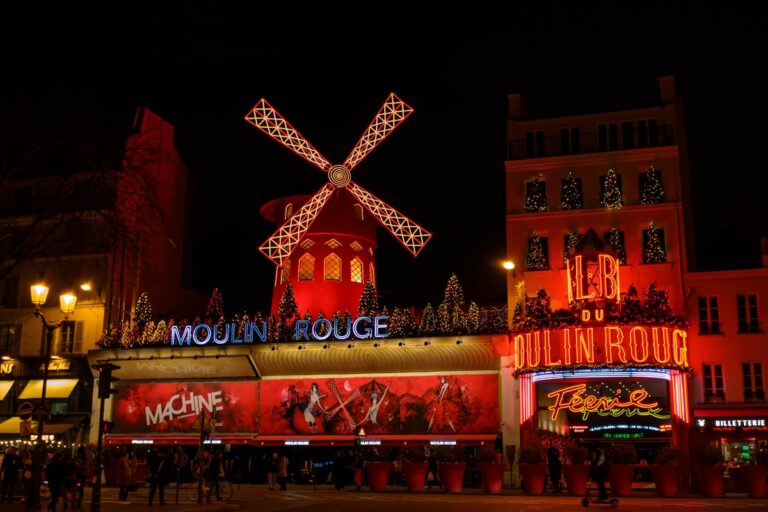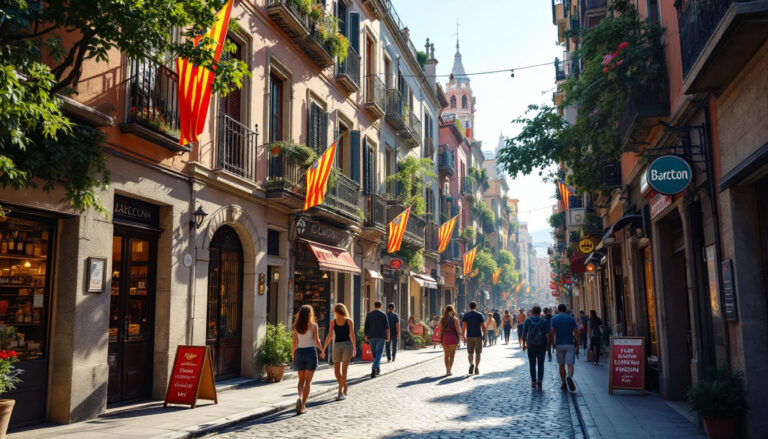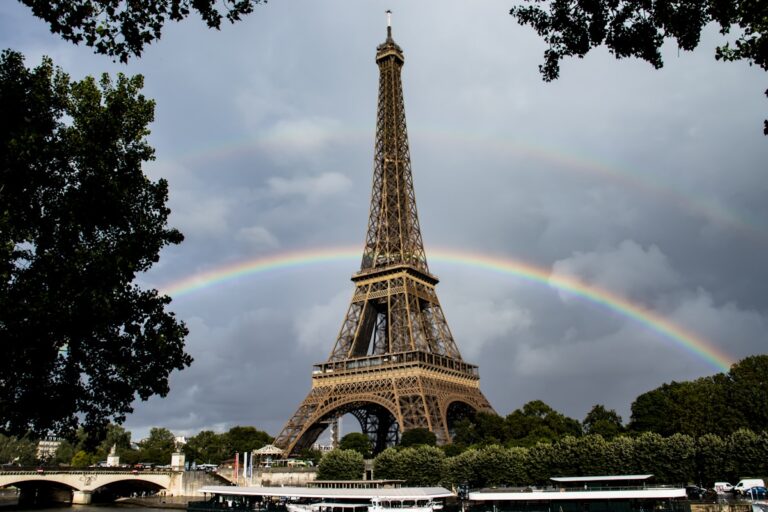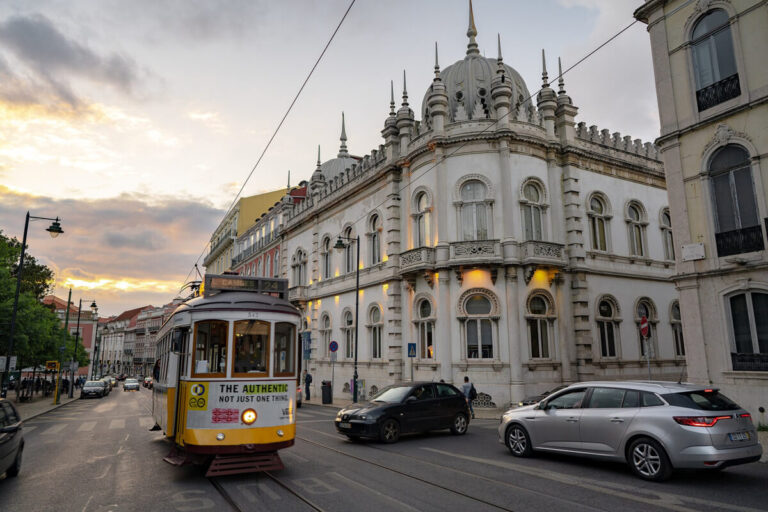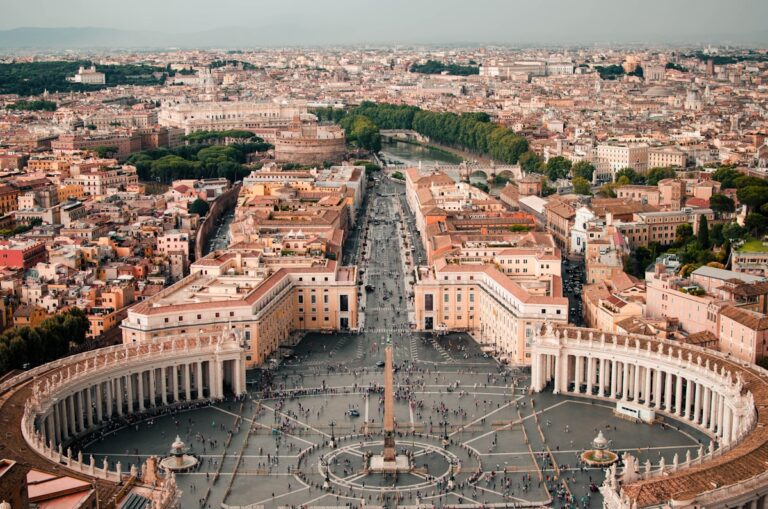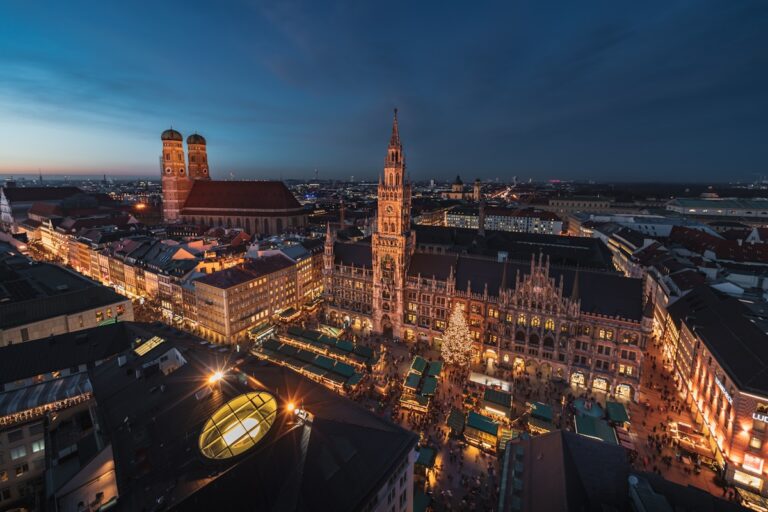Rome Museums: 10 Best Museums in Rome, Italy
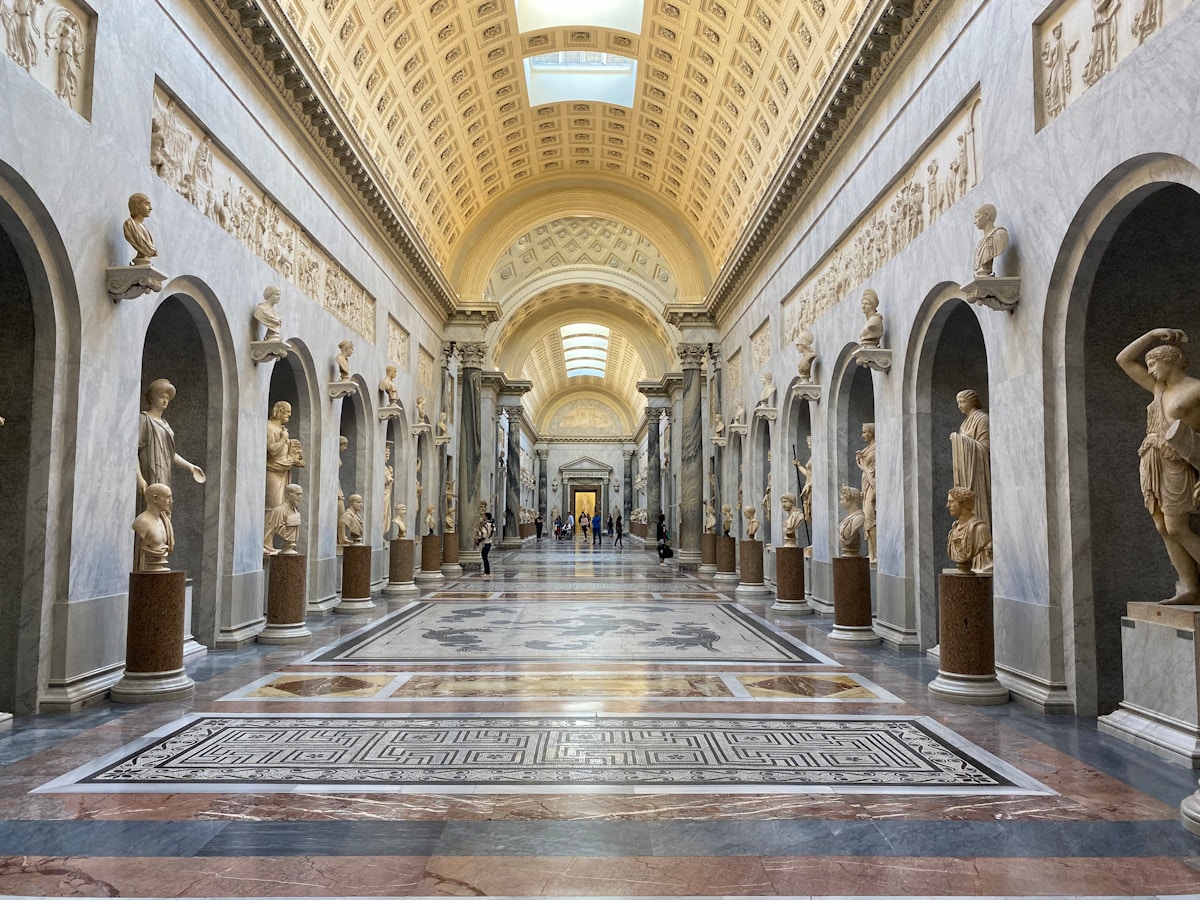
Rome Museums: Best Museums in Rome, Italy: Rome’s museums are key cultural institutions holding treasures spanning over 2,000 years of civilization.
- Exploring Rome's Museums: A Journey Through Art, History, and Culture
- The Rich History and Art Collection Spanning Centuries
- How to Choose the Best Museums in Rome Based on Interests
- Best Times to Visit to Avoid Crowds
- Rome Museum Passes and Discounts for Travelers
- Vatican Museums: One of the Best Museums in Rome for Art and History
- A Collection of Priceless Artworks and Historical Artifacts
- How to Plan a Visit Without Long Wait Times
- The Sistine Chapel: Michelangelo's Masterpiece
- Raphael's Rooms and the Gallery of Maps
- Capitoline Museums: The Oldest Public Museum in the World
- A Fascinating Collection of Ancient Roman Artifacts
- The Stunning Piazza del Campidoglio Designed by Michelangelo
- The Famous Statue of the She-Wolf and the Equestrian Statue of Marcus Aurelius
- The Dying Gaul and Busts of Roman Emperors
- Galleria Borghese: One of the Best Art Museums in Rome
- A Stunning Collection of Renaissance and Baroque Masterpieces
- A Beautiful Setting Surrounded by Villa Borghese Gardens
- Bernini's Sculptures: Apollo and Daphne, David
- Caravaggio's Paintings and Titian's Sacred and Profane Love
- National Roman Museum: Exploring Ancient Roman Art and Archaeology
- A Collection Spanning Different Locations Across Rome
- Showcasing Roman Mosaics, Sculptures, and Coins
- Palazzo Massimo alle Terme: The Frescoes of Livia's Villa
- Baths of Diocletian: Ancient Roman Thermal Baths and Sculptures
- MAXXI: Rome's Contemporary Art Museum
- A Bold and Modern Take on Italian and International Art
- Designed by Architect Zaha Hadid for a Futuristic Experience
- Contemporary Paintings, Photography, and Multimedia Installations
- Rotating Exhibitions Featuring Emerging Artists
- Museo Nazionale Etrusco di Villa Giulia: A Deep Dive Into Etruscan History
- A Rare Look at Pre-Roman Civilizations and Their Art
- A Beautiful Renaissance Villa Housing Priceless Artifacts
- The Sarcophagus of the Spouses: An Iconic Funerary Sculpture
- Gold Jewelry and Ceramics from Ancient Etruscan Cities
- Palazzo Doria Pamphilj: A Hidden Gem Among Rome Art Museums
- A Lavish Private Collection in a Stunning Palace Setting
- Less Crowded Than Other Famous Rome Museums
- Velázquez's Portrait of Pope Innocent X
- Works by Caravaggio, Titian, and Raphael
- Centrale Montemartini: Where Industrial Architecture Meets Classical Art
- Ancient Sculptures Displayed in a Former Power Plant
- A Striking Contrast Between Classical and Industrial Design
- Ancient Roman Statues, Mosaics, and Frescoes
- The Machinery of the Old Power Station
- Keats-Shelley House: A Literary Museum in the Heart of Rome
- The Final Home of John Keats Overlooking the Spanish Steps
- A Collection of Romantic Poetry, Letters, and Memorabilia
- Original Manuscripts and First Editions of Classic Works
- The Small But Historic Rooms Preserving Keats's Legacy
- Museo di Roma: A Deep Look Into the City's History
- A Fascinating Collection Tracing the City's Evolution
- Housed in the Beautiful Palazzo Braschi Near Piazza Navona
- Paintings, Photographs, and Everyday Objects from Roman History
- Stunning Views of Piazza Navona from the Museum Windows
- Choosing the Best Museums in Rome Based on Interests
- Galleria Borghese, Capitoline Museums, National Roman Museum
- MAXXI, Centrale Montemartini, Palazzo Doria Pamphilj
- Vatican Museums, National Etruscan Museum, Baths of Diocletian
- Keats-Shelley House, Palazzo Doria Pamphilj, Centrale Montemartini
- Wrapping Up: Which Museum You'd Like to Visit in Rome?
The Vatican Museums, Capitoline Museums, and Galleria Borghese are the city’s foremost collections, displaying masterpieces from ancient artifacts to Renaissance art.
Visiting during early mornings or late afternoons offers better viewing conditions.
The city’s varied museums provide opportunities for both broad historical surveys and specialized artistic interests, encouraging deeper exploration of Rome’s cultural heritage.
TL;DR
Hide- Vatican Museums showcase the world's largest art collection, including the Sistine Chapel and Raphael's Rooms.
- Galleria Borghese features masterpieces by Bernini, Caravaggio, and Titian in an elegant 17th-century villa setting.
- Capitoline Museums, Rome's oldest public museums, display ancient Roman artifacts and Renaissance art across two palaces.
- National Roman Museum spans four locations, presenting extensive Roman archaeological collections and classical sculptures.
- Palazzo Doria Pamphilj houses private art collections in preserved Baroque rooms with works by Velázquez and Caravaggio.
Exploring Rome’s Museums: A Journey Through Art, History, and Culture
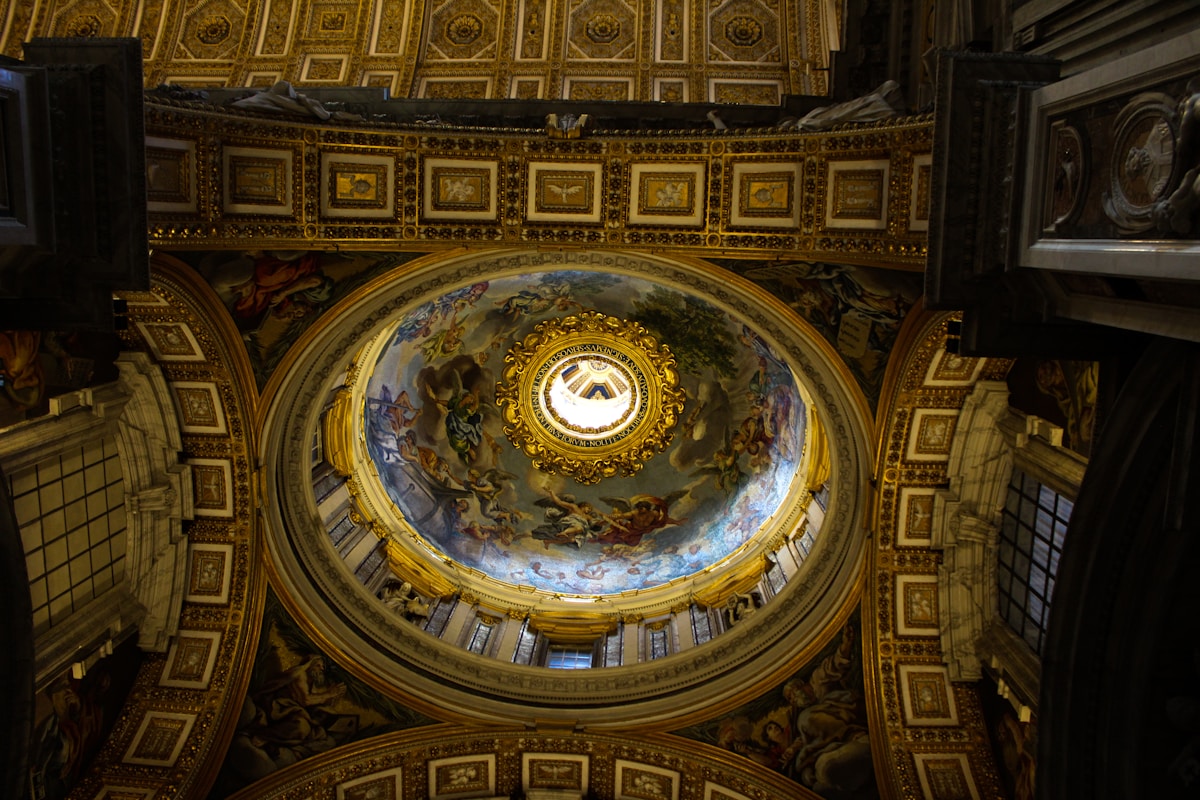
Rome’s museums stand as vital cultural repositories, housing some of the world’s most significant artistic and historical treasures spanning millennia of human civilization.
These institutions offer visitors unparalleled access to masterpieces from ancient Roman artifacts to Renaissance art, while providing essential historical context for the city’s rich cultural heritage.
Strategic planning, including pre-booking tickets and choosing ideal visiting hours, enables tourists to maximize their museum experiences in the Eternal City.
Why Museums in Rome Are a Must-Visit
Rome’s museums house an unparalleled collection of artistic and historical treasures spanning over two millennia, from ancient Roman artifacts to Renaissance masterpieces and contemporary works.
These institutions serve as essential repositories of civilization, offering visitors thorough insights into the evolution of Western art, architecture, and cultural development through carefully curated exhibitions and collections.
Visitors can align their museum choices with specific interests, whether they seek classical archaeology at the Capitoline Museums, Renaissance art at the Borghese Gallery, or modern installations at MAXXI, ensuring a meaningful and personalized cultural experience.
The Rich History and Art Collection Spanning Centuries
Throughout millennia of civilization, the museums of Rome have preserved an unparalleled legacy of artistic and cultural achievements that span from antiquity to the modern era.
Rome’s art museums showcase humanity’s greatest masterpieces through carefully curated collections.
- Ancient marble sculptures depicting mythological figures in the Vatican Museums
- Renaissance frescoes adorning the Borghese Gallery’s ornate chambers
- Baroque masterpieces housed within Rome’s best museums, illustrating artistic evolution
How to Choose the Best Museums in Rome Based on Interests
Selecting the ideal museum experience in Rome requires a thoughtful consideration of one’s personal interests and cultural preferences.
The best museums Rome offers cater to diverse passions: art enthusiasts gravitate toward Rome art museums like Galleria Borghese, history buffs explore archaeological collections at Capitoline Museum, while those seeking Renaissance masterpieces find fulfillment at Vatican Museums.
Each museum in Rome delivers specialized cultural immersion.
Tips for Visiting Rome Museums
Strategic planning is essential for an ideal museum experience in Rome, with early morning or late afternoon visits offering considerably reduced crowds at major institutions.
Museum passes like the Roma Pass provide cost-effective entry to multiple venues while allowing visitors to bypass lengthy ticket queues.
Savvy travelers can further maximize their cultural exploration through various available discounts, including reduced rates on specific weekdays, free admission days, and special passes for students and seniors.
Best Times to Visit to Avoid Crowds
To maximize the museum experience in Rome while avoiding overwhelming crowds, visitors should plan their visits during specific times and seasons that typically see lower attendance.
The best museums in Rome offer ideal viewing experiences during these strategic periods:
- Early mornings (8:00-10:00 AM) before tour groups arrive
- Late afternoons (4:00-6:00 PM) when day-trip visitors depart
- Winter months (November-February), excluding holiday weeks
Museums in Rome become considerably less crowded during these windows, allowing for contemplative engagement with exhibits.
Rome Museum Passes and Discounts for Travelers
Savvy travelers exploring Rome’s museums can greatly reduce their cultural expedition costs through strategic use of passes and discount programs offered throughout the city.
The Roma Pass provides unlimited public transportation and free entry to select museums, while the Vatican Museums & Gardens Pass grants priority access.
Students and seniors qualify for reduced admission rates, and free entrance days occur monthly at state museums.
Vatican Museums: One of the Best Museums in Rome for Art and History
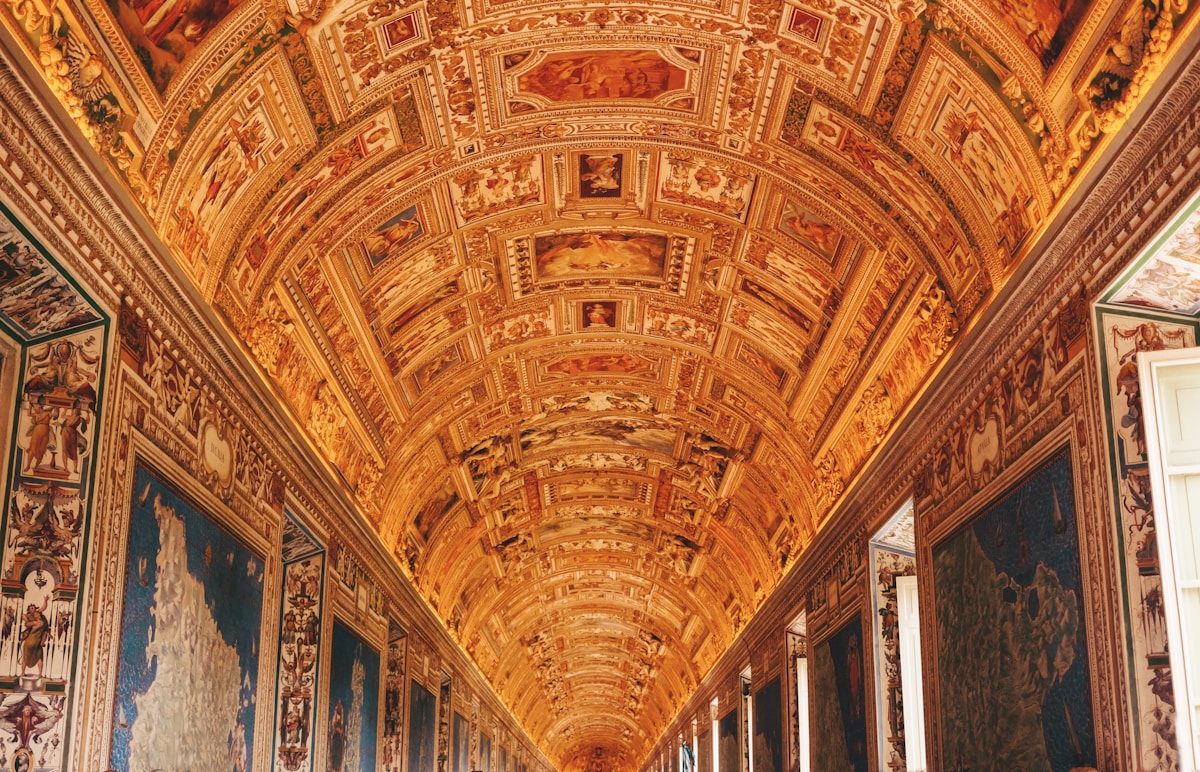
The Vatican Museums house one of the world’s most extensive collections of art, artifacts, and historical treasures across 54 galleries within Vatican City.
Visitors can expect to encounter masterpieces from ancient Egypt to the Renaissance, including the iconic Sistine Chapel with Michelangelo’s frescoes and Raphael’s famed Rooms.
Among the collection’s highlights are the Pio-Clementino Museum’s classical sculptures, the Gallery of Maps’ topographical frescoes, and the Gregorian Egyptian Museum’s ancient artifacts.
What to Expect at the Vatican Museums
The Vatican Museums house one of the world’s most extensive collections of Renaissance art, classical antiquities, and historical artifacts assembled over centuries by the Roman Catholic Church.
Visitors encounter masterpieces like the Sistine Chapel ceiling, Raphael’s School of Athens, and ancient Roman sculptures while traversing through elaborately decorated galleries and corridors that span nearly 4.5 miles.
To minimize wait times that frequently exceed three hours, guests should book timed entry tickets online and arrive during off-peak periods, particularly weekday afternoons or during the extended Friday evening hours.
A Collection of Priceless Artworks and Historical Artifacts
Located within Vatican City, visitors to the Vatican Museums encounter one of the world’s most extensive and significant collections of art, spanning over 500 years of human creativity and cultural achievement.
The museums house irreplaceable masterpieces across their galleries:
- Michelangelo’s frescoes in the Sistine Chapel, including the iconic “Creation of Adam”
- Raphael’s “School of Athens” in the Apostolic Palace
- Ancient Roman sculptures, including the “Apollo Belvedere” and “Laocoön Group”
How to Plan a Visit Without Long Wait Times
Planning strategically is essential for avoiding the notoriously long queues at the Vatican Museums, which can exceed three hours during peak tourist seasons.
Visitors can minimize wait times by booking tickets online, arriving early (before 9 AM), or scheduling visits during off-peak months (November-February).
Afternoon visits on Tuesdays and Thursdays typically experience shorter queues, as most tour groups operate mornings.
Highlights of the Vatican Museums
The Vatican Museums’ most renowned treasures include Michelangelo’s transcendent Sistine Chapel ceiling frescoes, which depict biblical narratives through revolutionary compositional techniques and unprecedented anatomical mastery.
Raphael’s Rooms showcase the High Renaissance master’s genius through four interconnected chambers adorned with elaborate frescoes, including the iconic “School of Athens” that exemplifies perfect perspective and classical influences.
The Gallery of Maps features 40 detailed topographical frescoes commissioned by Pope Gregory XIII, offering a fascinating 16th-century cartographic vision of Italy while demonstrating the intersection of art, science, and power in Renaissance Rome.
The Sistine Chapel: Michelangelo’s Masterpiece
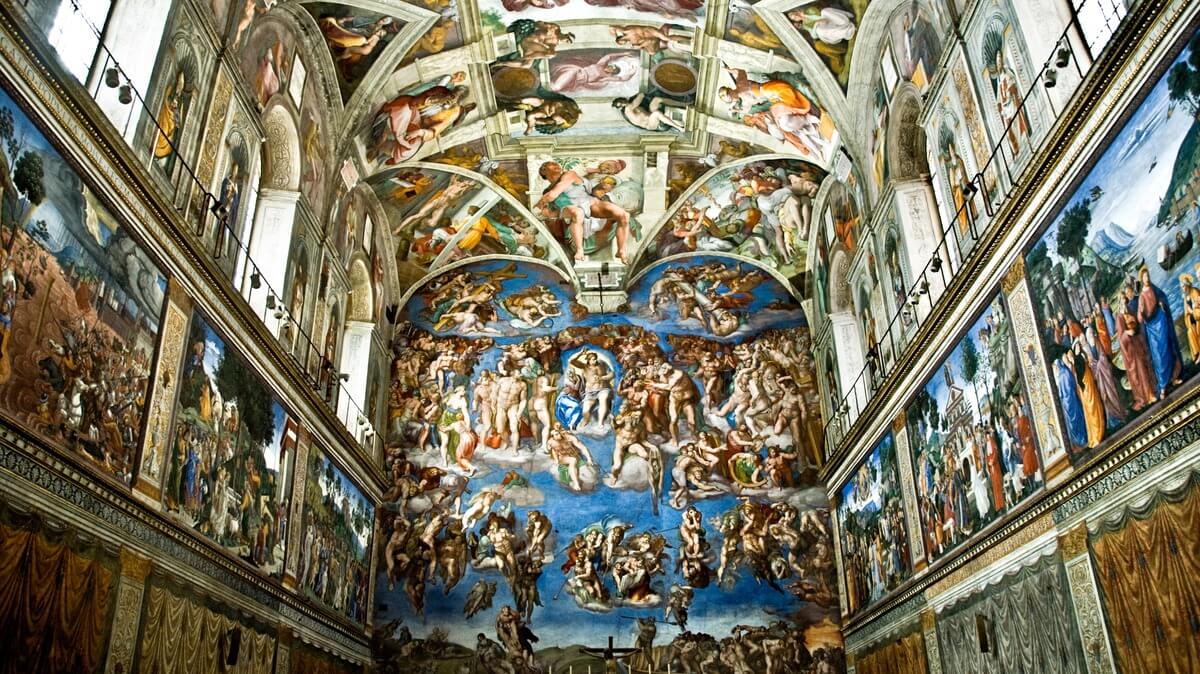
Considered the crowning achievement of Renaissance art, Michelangelo’s Sistine Chapel ceiling represents one of humanity’s most extraordinary artistic accomplishments.
The frescoes showcase unparalleled mastery of form, perspective, and theological narrative.
- The iconic “Creation of Adam” depicts divine inspiration through fingertip proximity.
- Over 300 figures populate the ceiling’s nine central panels.
- The “Last Judgment” on the altar wall demonstrates dramatic human conditions.
Raphael’s Rooms and the Gallery of Maps
Located adjacent to the Sistine Chapel, Raphael’s Rooms (Stanze di Raffaello) represent another pinnacle of High Renaissance artistry within the Vatican Museums.
These four interconnected chambers showcase Raphael’s masterful frescoes, commissioned by Pope Julius II.
The Gallery of Maps, a separate 120-meter corridor, features 40 topographical maps of Italy, crafted in the 16th century, depicting the Italian peninsula’s regions with remarkable accuracy.
Capitoline Museums: The Oldest Public Museum in the World
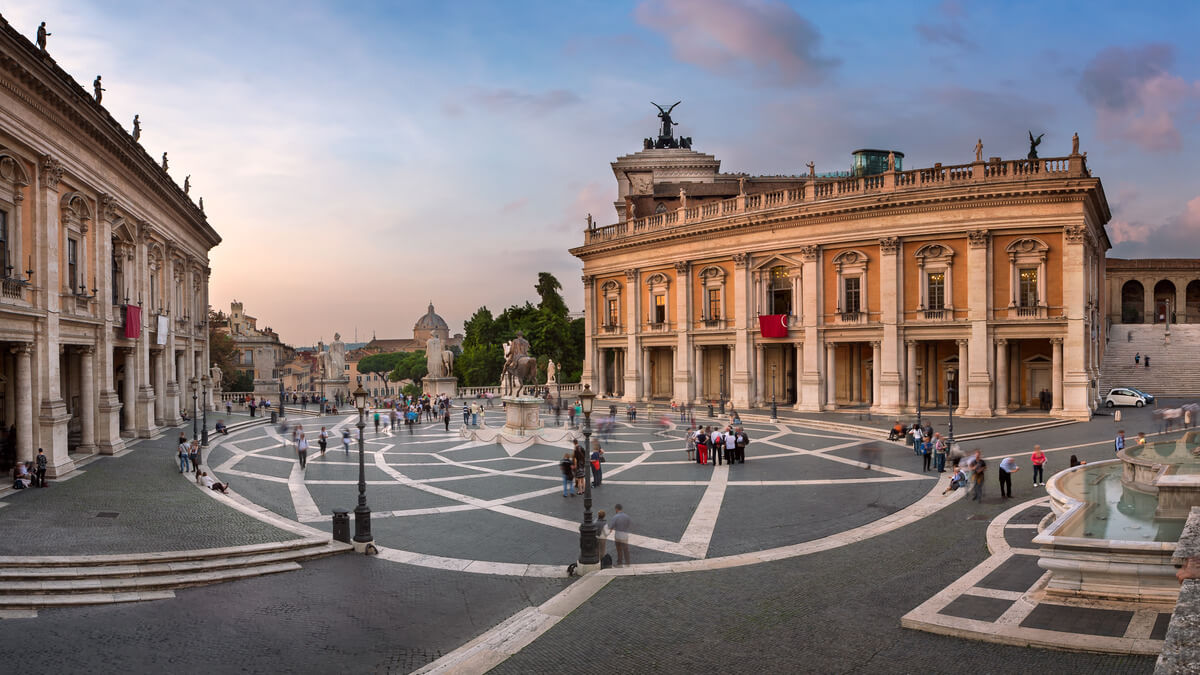
The Capitoline Museums, established in 1471, represent a monumental achievement in cultural preservation as the world’s oldest public museum complex.
Located atop Rome’s Capitoline Hill, these museums house an exceptional collection of ancient Roman statuary, Renaissance art, and archaeological artifacts that illuminate the city’s rich historical narrative.
The museum’s most celebrated exhibits include the iconic bronze Capitoline Wolf, the colossal fragments of Constantine, and Marcus Aurelius’s equestrian statue, making it an essential destination for understanding Rome’s artistic and political heritage.
Why the Capitoline Museums Are a Must-See in Rome
The Capitoline Museums, established in 1471, hold the distinction of being the world’s oldest public museum complex and showcase an unparalleled collection of ancient Roman artifacts, including the iconic bronze Capitoline Wolf and the equestrian statue of Marcus Aurelius.
The museums occupy two magnificent palaces on the Piazza del Campidoglio, a masterwork of Renaissance urban design conceived by Michelangelo in 1536.
The harmonious integration of architecture and antiquities creates an exemplary museum experience, where visitors can examine premier archaeological treasures within a setting that itself embodies Rome’s artistic evolution from ancient times through the Renaissance.
A Fascinating Collection of Ancient Roman Artifacts
Treasures of ancient Rome find their most extensive home in the Capitoline Museums‘ vast collection, which stands as the world’s oldest public museum complex.
This repository houses remarkable artifacts that illuminate the empire’s grandeur.
- Bronze statue of Marcus Aurelius astride his horse, preserved in remarkable detail
- Iconic Capitoline Wolf nursing Romulus and Remus
- Colossal marble fragments of Emperor Constantine, including his massive head
The Stunning Piazza del Campidoglio Designed by Michelangelo
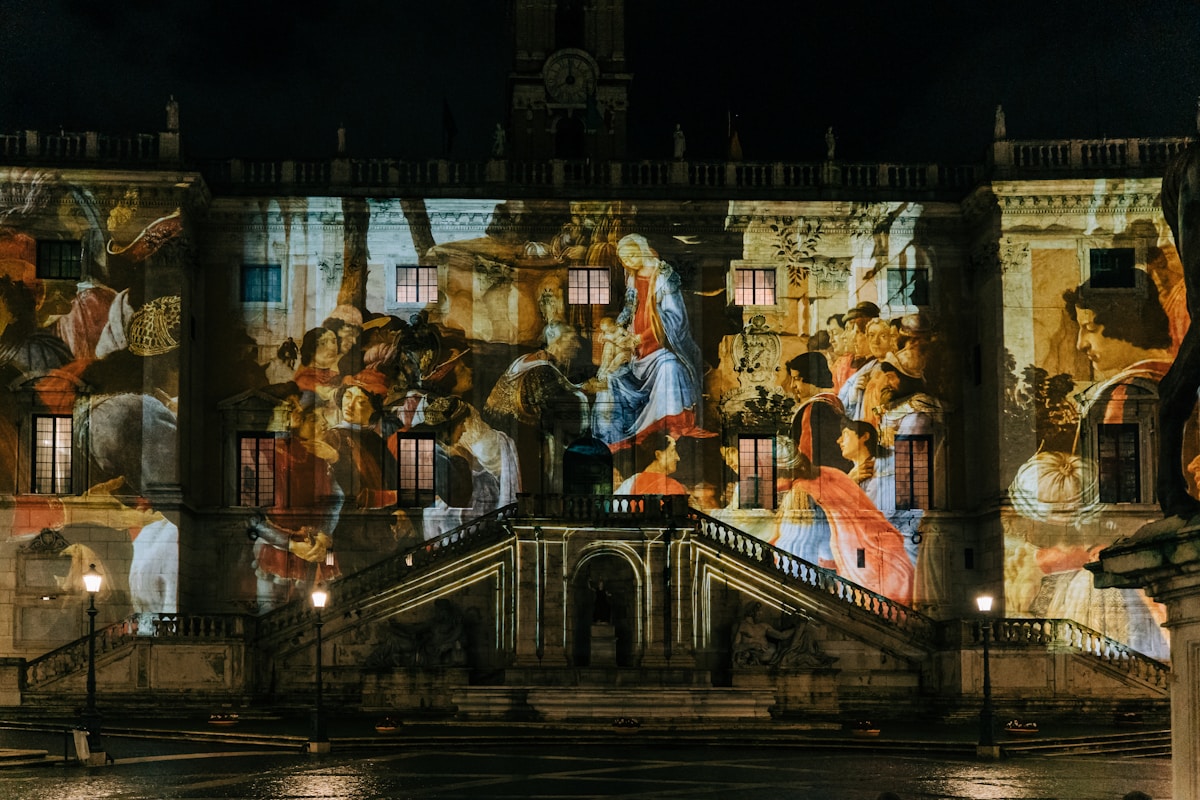
Perched atop Rome’s Capitoline Hill, Michelangelo’s masterful design of Piazza del Campidoglio represents Renaissance urban planning at its finest.
The trapezoidal square, commissioned by Pope Paul III in 1536, features a distinctive geometric ground pattern radiating from the central Marcus Aurelius statue.
Flanked by three palaces housing the Capitoline Museums, this architectural ensemble exemplifies harmonious spatial composition and classical symmetry.
Must-See Exhibits at the Capitoline Museums
The Capitoline Museums house some of antiquity’s most significant works, including the iconic Capitoline Wolf, a bronze sculpture depicting Rome’s legendary founding myth of Romulus and Remus.
The museum’s collection features the remarkable Equestrian Statue of Marcus Aurelius, a rare surviving bronze equestrian monument from ancient Rome, alongside the emotionally charged Dying Gaul, a Roman marble copy of a lost Hellenistic masterpiece.
The extensive array of Roman imperial busts provides unparalleled insights into the faces of power throughout the empire’s history, representing one of the world’s finest collections of imperial portraiture.
The Famous Statue of the She-Wolf and the Equestrian Statue of Marcus Aurelius
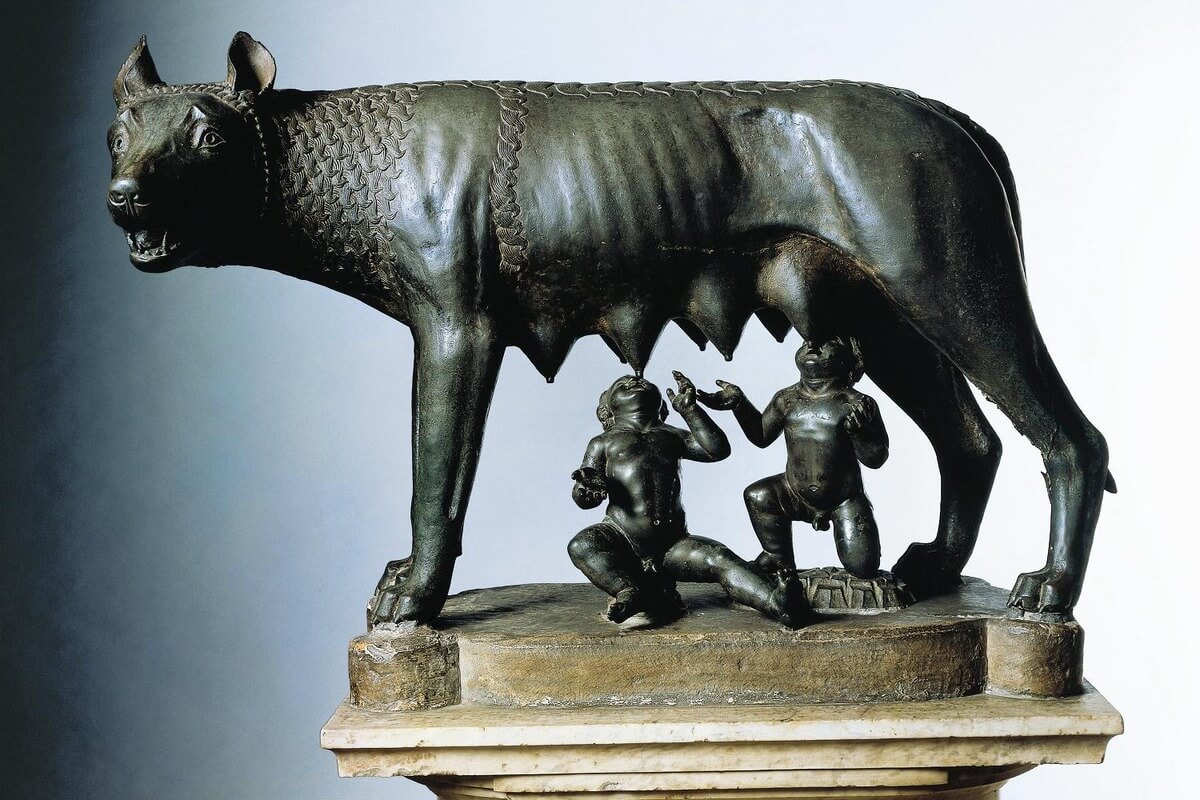
Among the most iconic masterpieces housed in the Capitoline Museums, two bronze sculptures stand as enduring symbols of Rome’s mythological origins and imperial might: the Capitoline Wolf and the Equestrian Statue of Marcus Aurelius.
- The She-Wolf depicts a fierce bronze lupine figure nursing Romulus and Remus.
- The majestic equestrian statue portrays Marcus Aurelius in commanding posture.
- Both works exemplify classical Roman bronze casting techniques at their apex.
The Dying Gaul and Busts of Roman Emperors
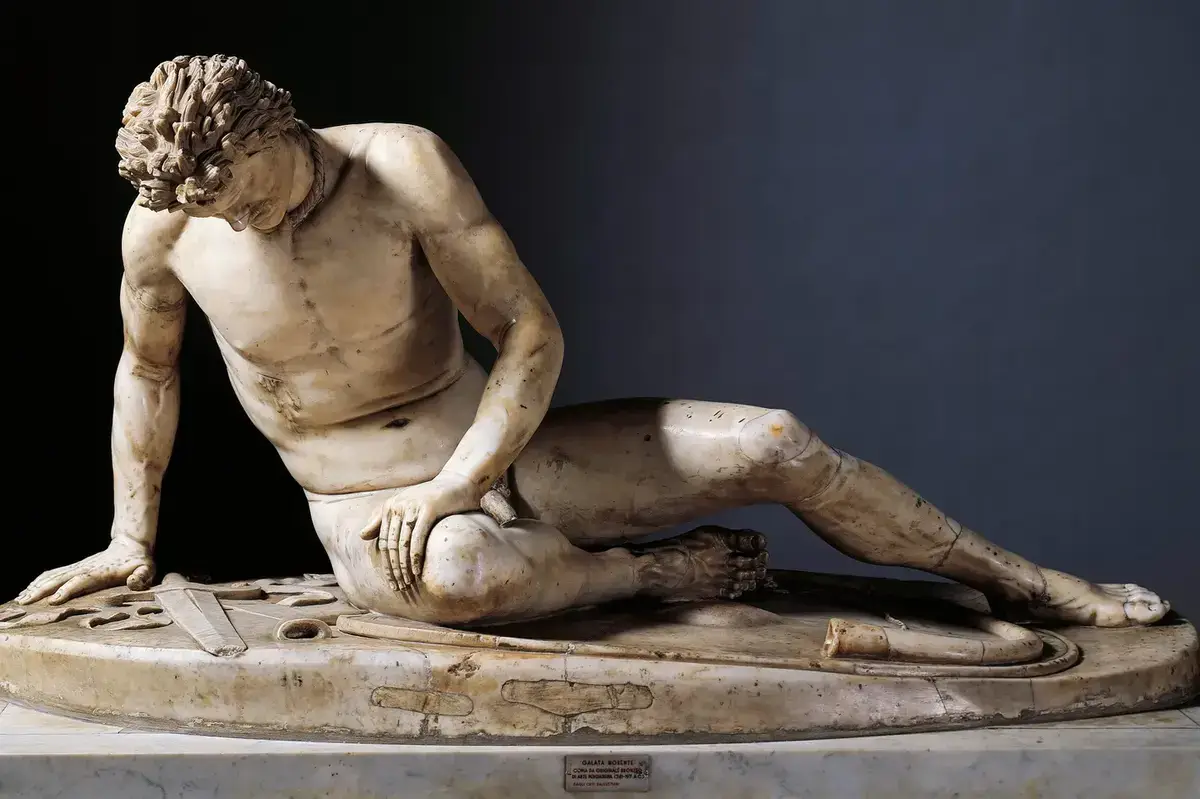
Masterfully carved in white marble, the Dying Gaul stands as one of antiquity’s most poignant sculptures, while the museum’s extensive collection of Roman imperial busts offers an unparalleled chronicle of Rome’s rulers.
The Hellenistic masterpiece depicts a mortally wounded Celtic warrior, capturing his dignified final moments.
The imperial portraits, spanning Augustus to Constantine, reveal evolving artistic styles and political propaganda through precise physiognomical details.
Galleria Borghese: One of the Best Art Museums in Rome
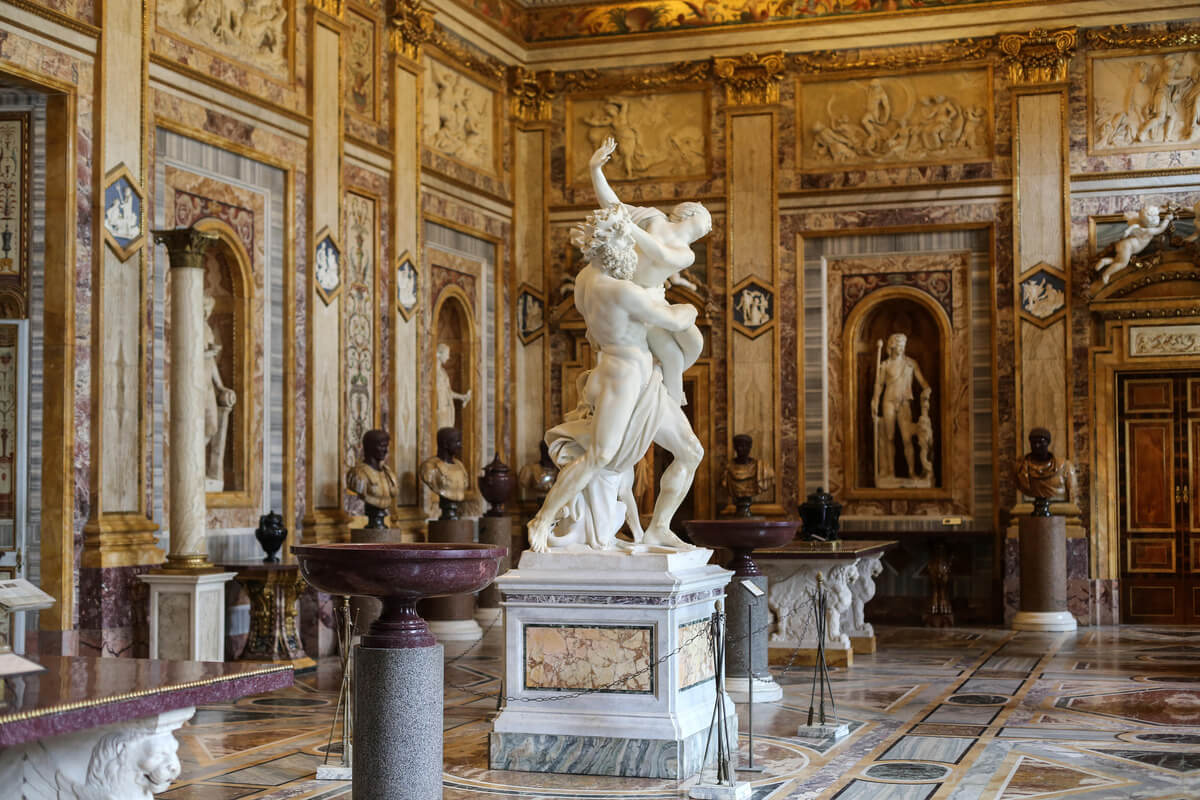
The Galleria Borghese, housed in the 17th-century Villa Borghese, represents one of Rome’s premier art collections, featuring masterworks from antiquity through the 18th century.
Cardinal Scipione Borghese’s discerning eye and patronage established this remarkable collection, which includes seminal works by Bernini, Caravaggio, Titian, and Raphael.
The museum’s most notable pieces include Bernini’s “Apollo and Daphne” sculpture, Caravaggio’s “Boy with a Basket of Fruit,” and Titian’s “Sacred and Profane Love,” all displayed in their original intended settings within opulently decorated rooms.
What Makes Galleria Borghese a Top Rome Art Museum
The Galleria Borghese stands as a preeminent institution in Rome’s cultural landscape, housing one of the world’s finest collections of Renaissance and Baroque art within its historic villa walls.
The museum’s collection features masterworks by legendary artists including Bernini, Caravaggio, Titian, and Raphael, showcasing the pinnacle of Italian artistic achievement from the 16th and 17th centuries.
Set within the expansive Villa Borghese gardens, the museum’s architectural grandeur and manicured surroundings create an exceptional context for experiencing these extraordinary works of art.
A Stunning Collection of Renaissance and Baroque Masterpieces
Housed within a stunning 17th-century villa, Galleria Borghese’s collection represents one of the world’s finest assemblages of Renaissance and Baroque art.
The museum’s masterpieces exemplify artistic innovation and technical virtuosity through:
- Bernini’s dynamic marble sculptures, including Apollo and Daphne
- Caravaggio’s revolutionary paintings featuring dramatic chiaroscuro
- Titian’s Sacred and Profane Love, demonstrating Venetian color mastery
The collection embodies freedom of artistic expression and human creativity.
A Beautiful Setting Surrounded by Villa Borghese Gardens
Situated within Rome’s third-largest public park (also read the top parks in Rome), Galleria Borghese benefits from its picturesque location amid the sprawling Villa Borghese Gardens.
The museum’s strategic positioning within 80 hectares of manicured landscapes enhances visitors’ cultural experience, offering a harmonious blend of art and nature.
The surrounding gardens, designed in the English landscape tradition, provide contemplative spaces and scenic pathways between magnificent art viewings.
Masterpieces to See at Galleria Borghese
The Galleria Borghese houses some of Western art’s most significant masterpieces, including Bernini’s revolutionary Baroque sculptures “Apollo and Daphne” and “David,” which showcase his mastery of transforming marble into dynamic, emotionally charged forms.
The museum’s collection features several pivotal works by Caravaggio, whose dramatic use of chiaroscuro revolutionized painting in the 17th century.
Titian’s “Sacred and Profane Love” stands as a cornerstone of Venetian Renaissance painting, exemplifying the artist’s sophisticated allegorical imagery and masterful technique.
Bernini’s Sculptures: Apollo and Daphne, David
Among Gian Lorenzo Bernini’s most celebrated masterpieces, Apollo and Daphne (1622-1625) and David (1623-1624) represent pinnacle achievements in Baroque sculpture, demonstrating the artist’s unparalleled ability to transform marble into dramatic narrative scenes.
- Apollo’s determined pursuit and Daphne’s metamorphosis into a laurel tree capture motion frozen in stone.
- David’s coiled form embodies potential energy moments before confronting Goliath.
- Both works exemplify Bernini’s mastery of psychological intensity through carved marble.
Caravaggio’s Paintings and Titian’s Sacred and Profane Love
Several masterworks by Caravaggio and Titian’s enigmatic Sacred and Profane Love anchor the Galleria Borghese‘s renowned painting collection, establishing it as a premier destination for Italian Renaissance and Baroque art.
Caravaggio’s dramatic works include Boy with a Basket of Fruit, Madonna dei Palafrenieri, and St. Jerome Writing, while Titian’s allegorical masterpiece continues to intrigue scholars with its complex symbolism.
National Roman Museum: Exploring Ancient Roman Art and Archaeology
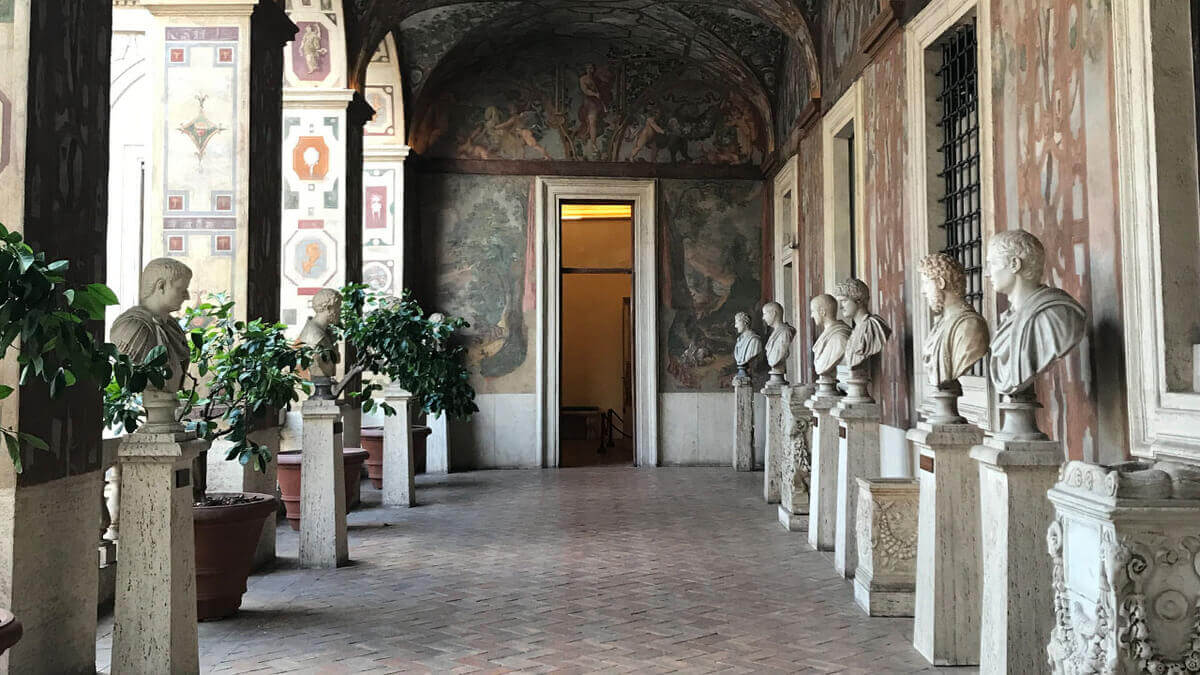
The National Roman Museum, distributed across four locations in Rome, houses one of the world’s most significant collections of ancient Roman art and archaeological artifacts.
Visitors encounter an extensive array of classical sculptures, frescoes, mosaics, and coins displayed throughout the Palazzo Massimo alle Terme, Palazzo Altemps, Crypta Balbi, and Baths of Diocletian sites.
The museum’s premier sections include the numismatic collection at Palazzo Massimo, the imperial era sculptures at Palazzo Altemps, and the excavated artifacts revealing everyday Roman life at Crypta Balbi.
What to Expect at the National Roman Museum
The National Roman Museum operates across multiple prestigious sites throughout Rome, creating a wide-ranging network dedicated to preserving and exhibiting ancient Roman artifacts.
The museum’s vast collection encompasses exquisite Roman mosaics that showcase intricate craftsmanship, classical sculptures that exemplify the pinnacle of Roman artistry, and an extensive numismatic collection featuring rare coins that illuminate the empire’s economic history.
These carefully curated locations work in concert to present visitors with a thorough examination of Roman civilization through its material culture, architectural achievements, and artistic legacy.
A Collection Spanning Different Locations Across Rome
Located across four distinct sites throughout Rome, Italy’s National Roman Museum (Museo Nazionale Romano) houses one of the world’s most extensive collections of ancient Roman art and artifacts.
The museum’s strategic distribution enables visitors to explore different aspects of Roman civilization:
- Palazzo Massimo showcases classical sculptures and imperial artifacts.
- Palazzo Altemps exhibits Greek and Roman marble collections.
- Crypta Balbi reveals medieval archaeology and urban development.
Showcasing Roman Mosaics, Sculptures, and Coins
Inside the halls of Rome’s National Roman Museum, visitors encounter an extraordinary assemblage of ancient Roman artistic achievements, from intricately detailed floor mosaics to masterfully carved marble sculptures and rare numismatic collections.
These artifacts illuminate Rome’s cultural prominence, with exhibits showcasing imperial portraiture, mythological scenes in mosaic form, and extensive coin collections documenting the empire’s economic and political evolution.
Top Sections of the National Roman Museum
The National Roman Museum’s most remarkable sections include the Palazzo Massimo alle Terme, which houses the stunning frescoes from Livia’s Villa, representing one of the finest examples of Roman wall painting from the 1st century BCE.
The Baths of Diocletian complex showcases monumental architecture from Rome’s imperial period, featuring well-preserved thermal chambers and an impressive collection of classical sculptures.
These two sections exemplify the museum’s dual focus on both decorative arts and architectural heritage, offering visitors extensive insights into ancient Roman civilization.
Palazzo Massimo alle Terme: The Frescoes of Livia’s Villa
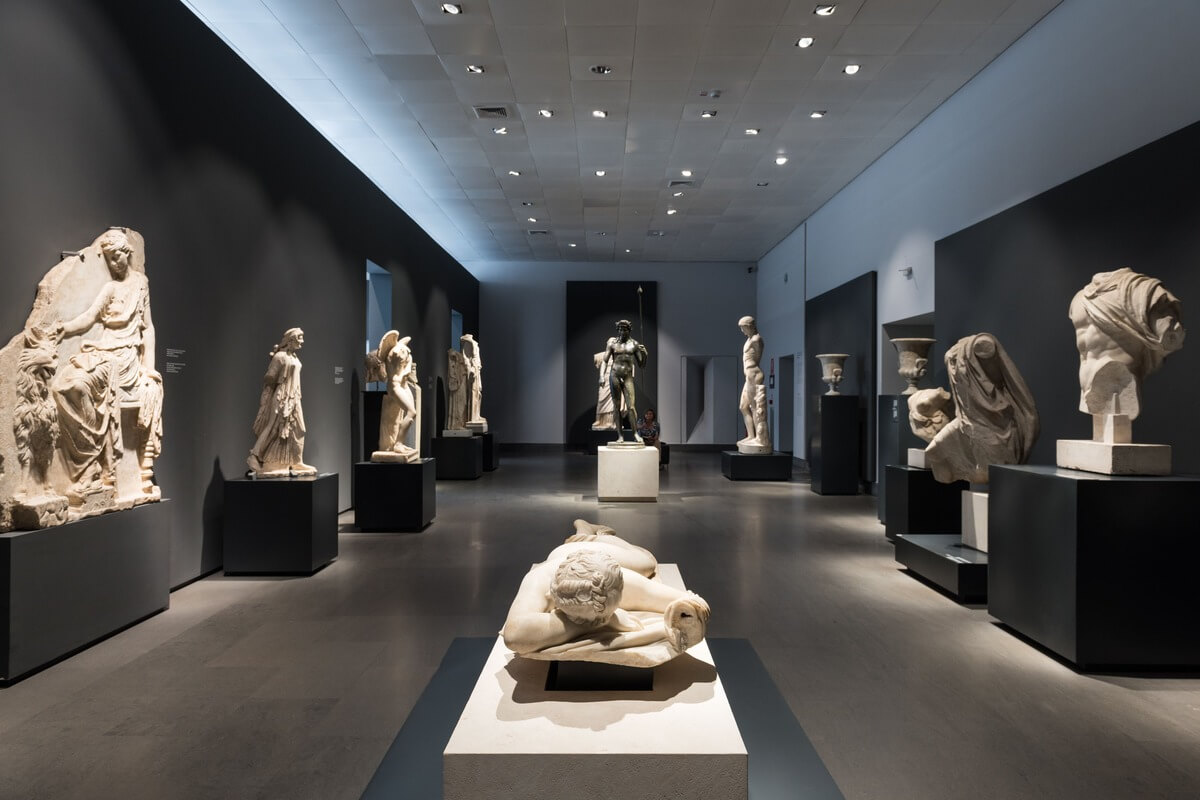
Among the most remarkable treasures housed within Palazzo Massimo alle Terme stands an exquisite series of garden frescoes, originally adorning the villa of Livia Drusilla, wife of Emperor Augustus.
These second-style Roman frescoes transport viewers into an ancient paradisiacal garden.
- Birds soar through azure skies amid flowering pomegranate trees
- Delicate pine trees sway against detailed botanical specimens
- Illusionistic walls dissolve into panoramic natural landscapes
The frescoes exemplify Roman artistic innovation through atmospheric perspective and naturalistic detail.
Baths of Diocletian: Ancient Roman Thermal Baths and Sculptures
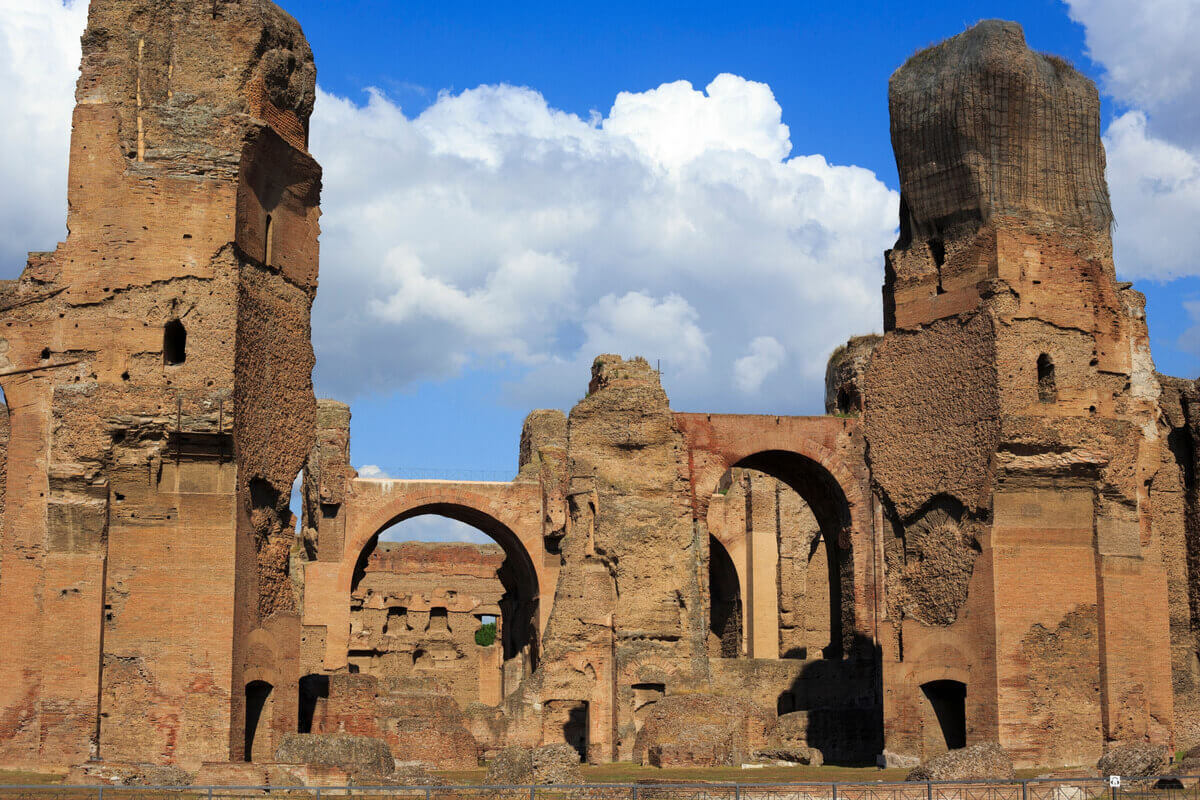
Originally constructed between 298-306 CE, Diocletian’s massive thermal complex stands as Rome’s most extensive surviving ancient bath structure, now housing an important wing of the National Roman Museum.
The museum showcases remarkable Roman sculptures, sarcophagi, and architectural elements within the preserved bathing chambers.
The grand vaulted halls and monumental spaces exemplify the engineering prowess of ancient Roman architecture.
MAXXI: Rome’s Contemporary Art Museum
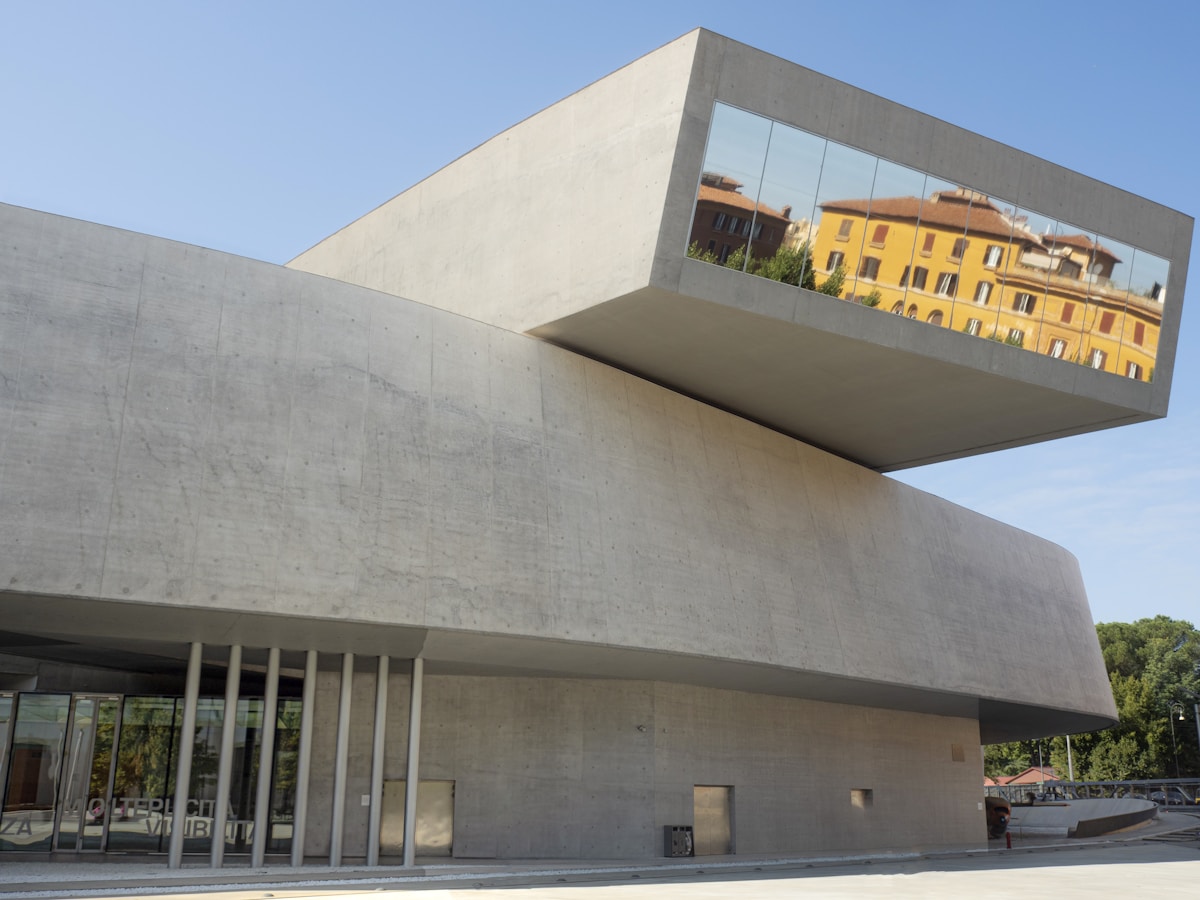
MAXXI, Rome’s National Museum of 21st Century Arts, stands as a striking architectural masterpiece designed by Zaha Hadid that houses Italy’s premier collection of contemporary art and experimental architecture.
The museum’s bold geometric design and flowing interior spaces serve as an ideal backdrop for its rotating exhibitions of international artists, multimedia installations, and avant-garde works.
Beyond its permanent collection, MAXXI functions as an essential cultural laboratory where visitors can explore the intersection of contemporary art, architecture, and innovative design through its diverse programming and educational initiatives.
Why MAXXI is a Must-Visit Rome Art Museum
MAXXI, Rome’s National Museum of 21st Century Arts, stands as a revolutionary architectural masterpiece designed by Pritzker Prize-winning architect Zaha Hadid.
The museum’s fluid, contemporary structure creates a striking contrast to Rome’s classical landscape while housing an impressive collection of modern and contemporary Italian and international art.
Through its bold design and innovative exhibitions, MAXXI exemplifies Italy’s commitment to advancing contemporary artistic expression within a space that merges futuristic architecture with cultural dialogue.
A Bold and Modern Take on Italian and International Art
While Rome’s classical heritage dominates its cultural landscape, the MAXXI Museum stands as a revolutionary symbol of contemporary artistic expression.
The museum’s innovative approach challenges traditional aesthetics through:
- Fluid architectural spaces that defy conventional gallery layouts
- Provocative installations merging Italian and global artistic perspectives
- Dynamic multimedia exhibitions exploring societal transformation and cultural identity
The collection transcends boundaries between past and present, making MAXXI a catalyst for artistic discourse.
Designed by Architect Zaha Hadid for a Futuristic Experience
The revolutionary architectural design of Rome’s premier contemporary art museum emerged from the visionary mind of Pritzker Prize-winning architect Zaha Hadid.
Her fluid, curvilinear design challenges traditional museum architecture, featuring sweeping concrete walls, dynamic staircases, and suspended black steel walkways.
This groundbreaking structure transcends conventional boundaries, creating an immersive journey through interconnected exhibition spaces that mirror contemporary art’s experimental nature.
What to See at MAXXI
MAXXI’s contemporary art collection showcases a dynamic array of paintings, photography, and multimedia installations that represent crucial developments in 21st-century artistic expression.
The museum’s rotating exhibition program strategically highlights both established and emerging artists, offering visitors fresh perspectives on contemporary cultural discourse.
These carefully curated displays emphasize experimental approaches and innovative techniques, positioning MAXXI as an essential platform for examining current trends in international contemporary art.
Contemporary Paintings, Photography, and Multimedia Installations
Located in Rome’s Flaminio district, MAXXI’s contemporary art collection showcases groundbreaking works across multiple mediums, featuring both established and emerging artists from Italy and abroad.
The museum’s dynamic exhibitions include:
- Large-scale abstract paintings exploring themes of identity and social change
- Documentary photography capturing urban transformation and cultural evolution
- Interactive multimedia installations incorporating sound, light, and digital technology
Rotating Exhibitions Featuring Emerging Artists
Through its dedication to fostering new artistic voices, MAXXI maintains an active rotation of temporary exhibitions that spotlight emerging talents from across Italy and the international art scene.
The museum’s dynamic programming introduces visitors to groundbreaking works by unconventional artists, experimental collectives, and rising stars who challenge traditional artistic boundaries.
These rotating exhibitions guarantee fresh perspectives and innovative artistic dialogues throughout the year.
Museo Nazionale Etrusco di Villa Giulia: A Deep Dive Into Etruscan History
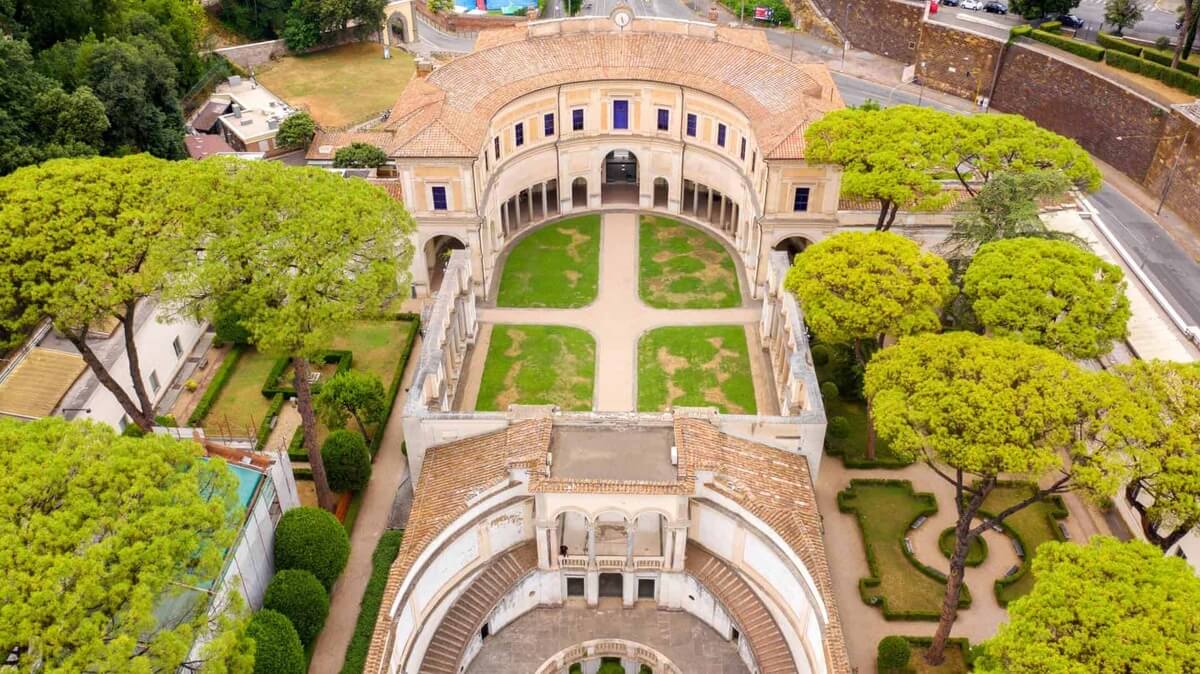
The Museo Nazionale Etrusco, housed in the Renaissance Villa Giulia, offers visitors unparalleled insights into the sophisticated Etruscan civilization that flourished in pre-Roman Italy.
The museum’s thorough collection features the celebrated Sarcophagus of the Spouses, intricate gold jewelry from Cerveteri, and the remarkable Apollo of Veii statue, which exemplifies Etruscan mastery of terracotta sculpture.
These artifacts, along with the museum’s extensive assemblage of tomb paintings, bronze works, and ceremonial objects, provide scholars and enthusiasts with essential evidence of Etruscan cultural achievements from the 8th to 1st centuries BCE.
Why Visit the National Etruscan Museum in Rome
The National Etruscan Museum offers an unparalleled examination of pre-Roman civilization through its extensive collection of Etruscan artifacts and art housed within the stunning 16th-century Villa Giulia.
The museum’s thorough assemblage includes rare ceremonial objects, intricate jewelry, and the famous Sarcophagus of the Spouses, providing essential insights into Etruscan cultural practices and artistic achievements.
Visitors experience these archaeological treasures within the Renaissance villa’s elegant architecture, creating a unique dialogue between ancient Etruscan heritage and Renaissance grandeur.
A Rare Look at Pre-Roman Civilizations and Their Art
Located in the elegant Renaissance-era Villa Giulia, Rome’s National Etruscan Museum houses one of the world’s most extensive collections of Etruscan artifacts and art, offering visitors unprecedented insights into this sophisticated pre-Roman civilization.
The museum illuminates the complex cultural tapestry of pre-Roman Italy through:
- Intricately decorated sarcophagi depicting aristocratic couples
- Gold filigree jewelry showcasing advanced metalworking techniques
- Terracotta temple decorations revealing religious and architectural practices
A Beautiful Renaissance Villa Housing Priceless Artifacts
Built in 1550 as Pope Julius III’s summer residence, Villa Giulia stands as one of Rome’s finest examples of Renaissance architecture and garden design.
Today, this elegant villa houses the National Etruscan Museum, featuring an unparalleled collection of pre-Roman artifacts, including the masterful Sarcophagus of the Spouses and intricate gold jewelry that illuminates the sophisticated craftsmanship of Etruscan civilization.
Must-See Exhibits at the Etruscan Museum
The National Etruscan Museum houses exceptional artifacts that illuminate the sophisticated artistry of ancient Etruria, with the celebrated Sarcophagus of the Spouses serving as its crown jewel.
This remarkable 6th-century BCE terracotta funerary monument depicts a married couple reclining at a banquet, offering invaluable insights into Etruscan social customs and sculptural techniques.
The museum’s collection is further enhanced by an impressive array of intricately crafted gold jewelry and ceremonial ceramics from prominent Etruscan cities, showcasing the civilization’s masterful metalworking and pottery traditions.
The Sarcophagus of the Spouses: An Iconic Funerary Sculpture
Among the most celebrated masterpieces of Etruscan art, a striking terracotta sarcophagus from the 6th century BCE portrays an affectionate married couple reclining together at a banquet.
This remarkable funerary sculpture exemplifies Etruscan social values and artistic sophistication through:
- Naturalistic facial expressions conveying intimacy
- Elaborate drapery details highlighting aristocratic status
- Revolutionary portrayal of marital equality in ancient society
Gold Jewelry and Ceramics from Ancient Etruscan Cities
Beyond the sarcophagus’s cultural insights, visitors to Villa Giulia encounter an unparalleled collection of Etruscan gold jewelry and ceramics, offering profound evidence of this ancient civilization’s technical mastery and artistic sophistication.
The exhibits showcase intricate filigree work, granulation techniques, and painted vessels from major Etruscan centers like Cerveteri and Vulci, revealing advanced metalworking methods and aesthetic sensibilities that influenced Roman artistry.
Palazzo Doria Pamphilj: A Hidden Gem Among Rome Art Museums
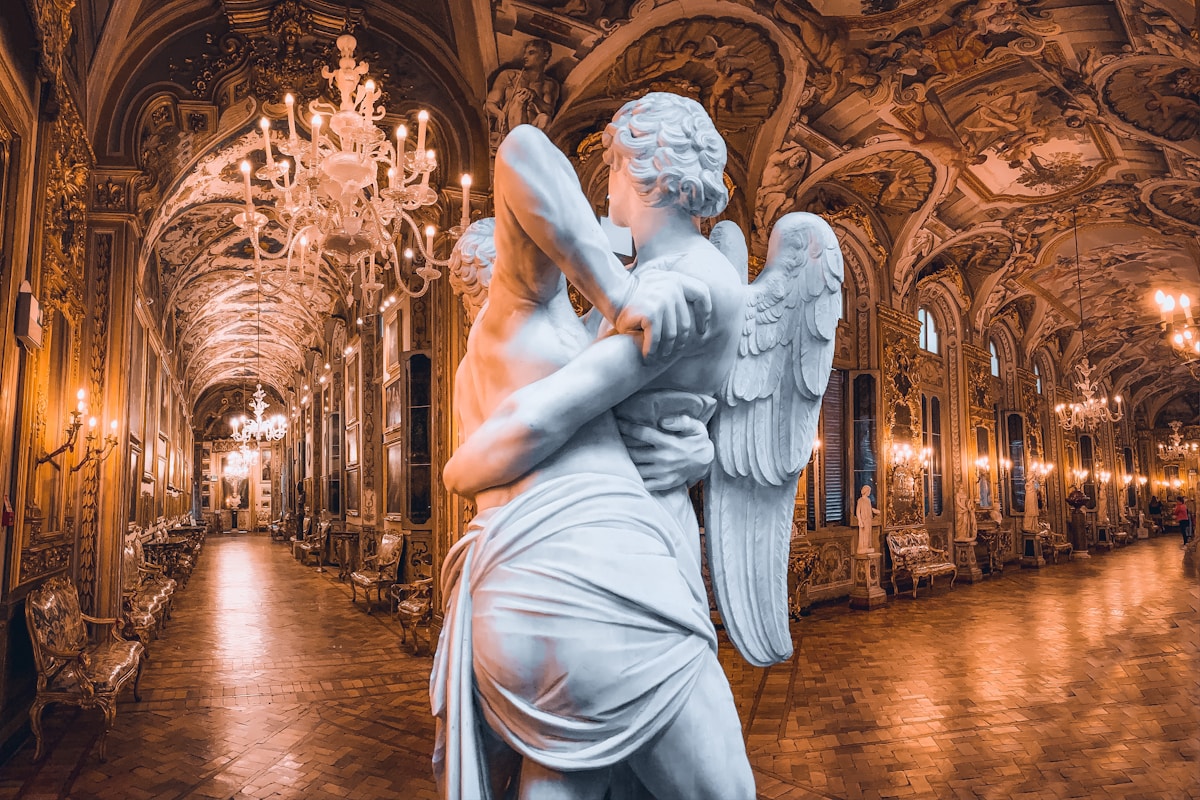
The Palazzo Doria Pamphilj stands as one of Rome’s most remarkable private art collections, housed within a magnificent 16th-century palace that remains the ancestral residence of the Doria Pamphilj family.
The museum’s exceptional collection features masterpieces by renowned artists including Caravaggio, Velázquez, Raphael, and Titian, displayed in opulent baroque galleries that maintain their original architectural integrity.
Beyond its artistic treasures, the palace offers visitors an intimate glimpse into aristocratic Roman life through its preserved period rooms and family apartments, distinguishing it from conventional museum experiences.
What Makes Palazzo Doria Pamphilj One of the Best Museums in Rome
The Palazzo Doria Pamphilj stands as one of Rome’s most remarkable yet lesser-known museum experiences, housing an extensive private collection within a magnificent 16th-century palace still owned by the original family.
Its galleries showcase masterpieces by Caravaggio, Velázquez, and Bernini among ornate Baroque interiors, offering visitors an intimate glimpse into aristocratic Roman collecting traditions.
While major institutions like the Vatican Museums draw massive crowds, this hidden treasure provides an uncrowded setting for viewing exceptional art amid authentic palatial surroundings.
A Lavish Private Collection in a Stunning Palace Setting
Located within a magnificent 17th-century baroque palace, Palazzo Doria Pamphilj stands as one of Rome’s most remarkable private art collections, offering visitors an intimate glimpse into aristocratic Roman life and artistic patronage.
The collection showcases:
- Masterpieces by Caravaggio, Raphael, and Titian displayed in opulent gilded galleries
- Original period furnishings and decorative arts reflecting noble Roman tastes
- Frescoed ceilings and mirrored halls preserving the palazzo’s authentic baroque ambiance
Less Crowded Than Other Famous Rome Museums
While Rome’s major museums often draw overwhelming crowds, Palazzo Doria Pamphilj offers visitors a more serene and contemplative art viewing experience.
Unlike the Vatican Museums or Galleria Borghese, this lesser-known treasure allows art enthusiasts to explore its magnificent collections without the typical tourist congestion.
Visitors can freely examine masterpieces by Caravaggio, Velázquez, and Bernini at their own pace.
Art Highlights at Palazzo Doria Pamphilj
The Palazzo Doria Pamphilj houses one of the most significant private art collections in Rome, with Diego Velázquez’s masterful Portrait of Pope Innocent X serving as its crown jewel.
The portrait, renowned for its psychological depth and technical virtuosity, shares gallery space with exemplary works by Italian masters Caravaggio, Titian, and Raphael.
These paintings, displayed in the palazzo’s ornate halls, represent the pinnacle of Renaissance and Baroque artistry through their masterful execution and historical significance.
Velázquez’s Portrait of Pope Innocent X
Among the most celebrated masterpieces in Rome’s Palazzo Doria Pamphilj hangs Diego Velázquez’s striking Portrait of Pope Innocent X (1650), widely regarded as one of the greatest portrait paintings in Western art history.
The psychological depth and technical mastery are evident in:
- The penetrating gaze that reveals the pontiff’s complex personality
- The virtuosic handling of crimson silk and velvet textures
- The masterful interplay of light and shadow defining papal authority
Works by Caravaggio, Titian, and Raphael
Several masterpieces by Renaissance and Baroque luminaries grace the opulent halls of Palazzo Doria Pamphilj, creating an extraordinary collection that rivals Rome’s more famous museums.
Caravaggio’s dramatic “Rest on the Flight into Egypt,” Titian’s enigmatic “Salome with the Head of John the Baptist,” and Raphael’s portrait “Double Portrait” showcase these masters’ revolutionary techniques in color, light, and composition.
Centrale Montemartini: Where Industrial Architecture Meets Classical Art

The Centrale Montemartini presents a striking juxtaposition of classical Roman statuary against the industrial backdrop of a former power plant, creating one of Rome’s most innovative museum experiences.
This unconventional venue houses an impressive collection of ancient sculptures and artifacts from the Capitoline Museums, strategically placed among vintage turbines, diesel engines, and early 20th-century machinery.
The stark contrast between pristine marble figures and raw industrial equipment offers visitors a unique contextual framework for examining both classical antiquity and Rome’s industrial heritage, making it a standout among the city’s cultural institutions.
Why Centrale Montemartini is One of the Most Unique Museums in Rome
The Centrale Montemartini presents a remarkable juxtaposition of classical Roman art within a decommissioned thermoelectric power plant, creating one of Rome’s most distinctive museum experiences.
Ancient marble sculptures and artifacts stand in dramatic contrast against the industrial backdrop of early 20th-century machinery, turbines, and diesel engines.
This unconventional setting transforms the traditional museum paradigm, allowing visitors to experience classical antiquities through a modernist lens while highlighting the aesthetic tension between Rome’s ancient artistic heritage and its industrial past.
Ancient Sculptures Displayed in a Former Power Plant
Located in Rome’s Ostiense district, Centrale Montemartini presents a striking juxtaposition of classical Roman sculptures against the backdrop of early 20th-century industrial machinery.
This innovative exhibition space showcases:
- Marble deities positioned among massive diesel engines
- Ancient Roman portrait busts adjacent to turbine controls
- Classical friezes mounted beside industrial pressure gauges
The unconventional setting transforms industrial heritage into a dynamic framework for archaeological treasures, challenging traditional museum paradigms.
A Striking Contrast Between Classical and Industrial Design
Within Centrale Montemartini’s innovative exhibition spaces, the deliberate interplay between classical Roman artifacts and industrial-age machinery creates a compelling aesthetic dialogue that challenges conventional museum design.
Ancient marble sculptures stand amid turbines and diesel engines, while delicate mosaics adorn walls near steel boilers, exemplifying how contrasting elements can heighten appreciation for both industrial heritage and classical antiquity.
What to See at Centrale Montemartini
The Centrale Montemartini showcases a remarkable juxtaposition of classical antiquities against the backdrop of early 20th-century industrial machinery, creating a striking visual dialogue between ancient Rome and the industrial age.
The museum’s collection features exquisite Roman statues, intricate mosaics, and well-preserved frescoes discovered during excavations throughout Rome, with notable pieces including the colossal statue of the Goddess Fortuna and the Esquiline Venus.
The preserved machinery of the former thermoelectric power plant, including massive diesel engines and turbines, serves as an unconventional yet compelling setting for the archaeological treasures, offering visitors a unique perspective on both technological and artistic heritage.
Ancient Roman Statues, Mosaics, and Frescoes
Housed in a former power plant from the early 1900s, Centrale Montemartini presents a striking juxtaposition of classical Roman art against industrial-age machinery.
The museum’s collection features masterpieces excavated from ancient Roman sites, displayed amid turbines and diesel engines.
- Life-sized marble statues of emperors and deities stand sentinel beside massive industrial boilers
- Intricate floor mosaics depicting mythological scenes contrast with steel catwalks
- Delicate wall frescoes showcase daily Roman life against concrete industrial walls
The Machinery of the Old Power Station
Modern industrial machinery stands as a compelling historical artifact in its own right at Centrale Montemartini, where massive engines and equipment tell the story of Rome’s early electrical power generation.
The museum’s preserved diesel engines, turbines, and control panels from the 1900s showcase the technological revolution that powered Rome’s modernization, creating a striking contrast with classical sculptures displayed throughout the industrial space.
Keats-Shelley House: A Literary Museum in the Heart of Rome
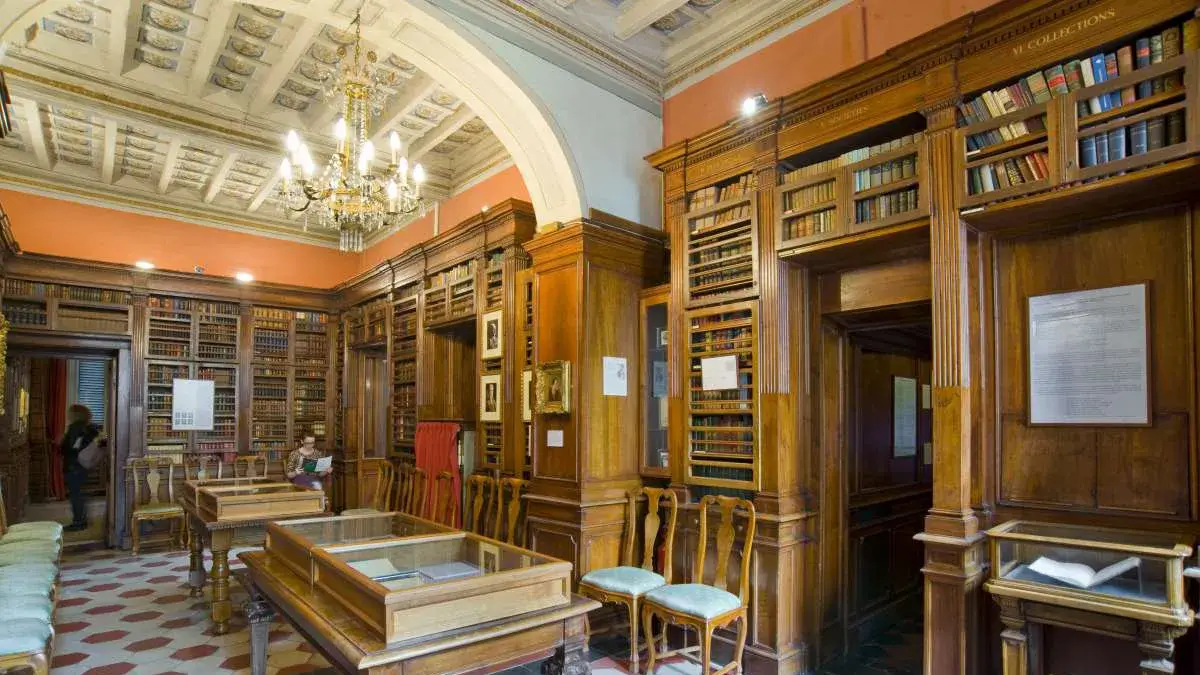
The Keats-Shelley House, situated at the foot of the Spanish Steps, preserves the final dwelling place of English Romantic poet John Keats and houses an extensive collection of manuscripts, artworks, and personal effects from both Keats and Percy Bysshe Shelley.
Literature enthusiasts will find the museum’s carefully curated exhibits particularly compelling, as they chronicle the lives and creative processes of these influential Romantic poets during their time in Rome.
The museum’s library contains over 8,000 volumes of Romantic literature, critical works, and reference materials, making it an essential destination for scholars and admirers of English Romantic poetry.
Why Literature Lovers Should Visit Keats-Shelley House
Located at the foot of Rome’s Spanish Steps, the Keats-Shelley House preserves the final residence where English Romantic poet John Keats spent his last months in 1821.
The museum houses an extensive collection of Romantic poetry manuscripts, personal correspondence, and rare first editions from prominent figures like Lord Byron, Percy Bysshe Shelley, and Keats himself.
Literary scholars and enthusiasts can examine intimate artifacts from the Romantic period, including Keats’s death mask, original letters, and period furnishings that recreate the ambiance of the poet’s final days.
The Final Home of John Keats Overlooking the Spanish Steps
Perched elegantly above Rome’s iconic Spanish Steps, Keats-Shelley House stands as a poignant memorial to the Romantic poet John Keats, who spent his final months in this historic apartment before succumbing to tuberculosis in 1821.
The museum preserves:
- Keats’s original bedroom, complete with period furnishings and the poet’s death mask
- First editions of Romantic poetry collections and manuscripts
- Personal artifacts belonging to both Keats and Percy Bysshe Shelley
A Collection of Romantic Poetry, Letters, and Memorabilia
Housed within its elegant rooms, Keats-Shelley House boasts an extraordinary collection of Romantic literary treasures that extends far beyond its role as Keats’s final residence.
The museum preserves over 8,000 artifacts, including rare first editions, manuscripts, and personal letters from luminaries like Percy Shelley, Lord Byron, and Mary Shelley, offering scholars and enthusiasts intimate glimpses into the Romantic movement’s golden age.
What to Expect at the Keats-Shelley House
The Keats-Shelley House houses an extensive collection of original manuscripts and first editions from the Romantic period, including works by John Keats, Percy Bysshe Shelley, and Lord Byron.
The museum’s intimate rooms maintain their 19th-century character, featuring period furniture and decor that transport visitors to the era when Keats spent his final months in Rome.
The carefully preserved bedroom where Keats died in 1821 serves as the focal point of the museum, containing personal artifacts and providing a poignant connection to the poet’s legacy.
Original Manuscripts and First Editions of Classic Works
Among the most precious holdings at the Keats-Shelley House lies an exceptional collection of original manuscripts and first editions that illuminate the Romantic literary movement.
The museum’s literary treasures showcase the evolution of Romantic poetry through:
- Keats’s handwritten letters and drafts, including his famous “Bright Star” sonnet
- First editions of Percy Shelley’s “Prometheus Unbound”
- Mary Shelley’s personal annotations in rare volumes of “Frankenstein”
The Small But Historic Rooms Preserving Keats’s Legacy
Located at the foot of the Spanish Steps, historic rooms within the Keats-Shelley House preserve an intimate glimpse into John Keats’s final months of life.
The carefully maintained chambers house original furniture, personal effects, and the poet’s death mask.
This literary sanctuary, where Keats spent his last days in 1821, now serves as a tribute to Romantic poetry’s enduring legacy in Rome.
Museo di Roma: A Deep Look Into the City’s History
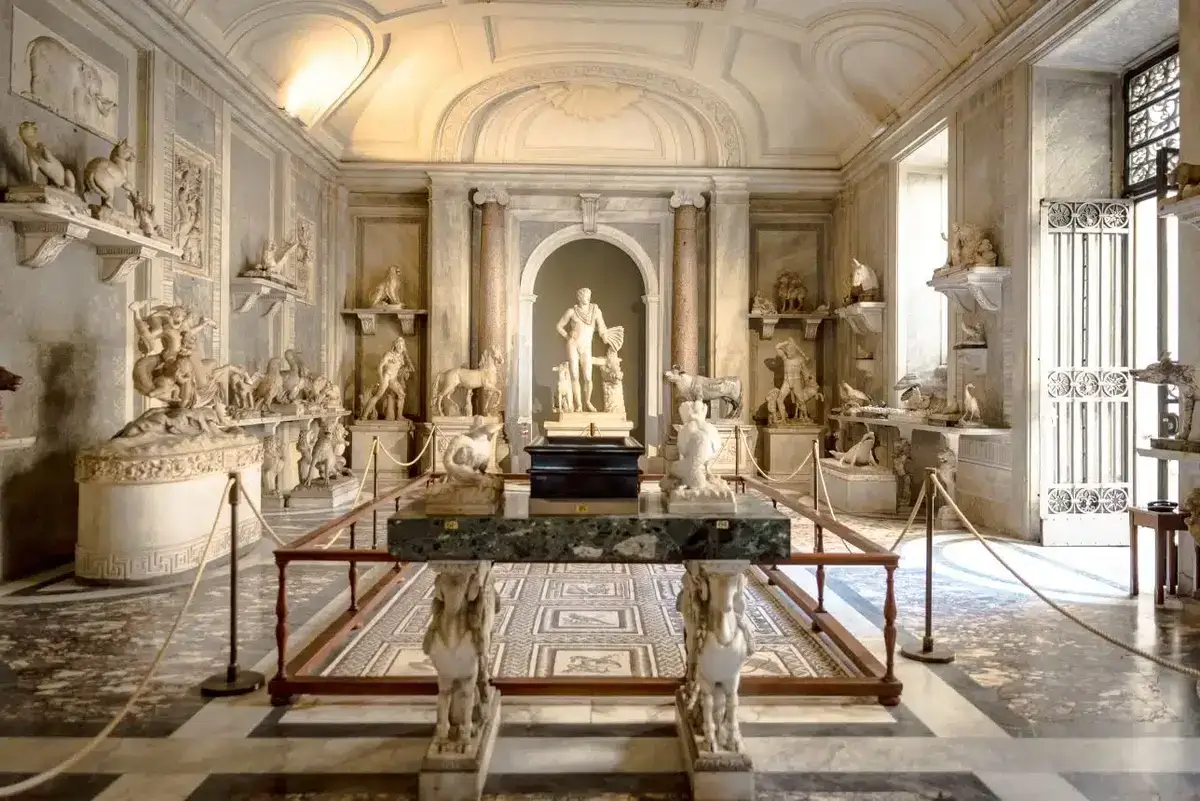
Located in the historic Palazzo Braschi, the Museo di Roma stands as a premier institution chronicling Rome’s cultural evolution from the Middle Ages through the twentieth century.
The museum’s extensive collection encompasses paintings, sculptures, photographs, and everyday artifacts that document the transformation of Rome from a papal state to a modern capital.
Through its masterfully curated exhibits, visitors gain critical insights into Roman social customs, urban development, and artistic movements that shaped the Eternal City’s identity.
Why Museo di Roma is One of the Best Museums in Rome for History
The Museo di Roma, situated in the elegant Palazzo Braschi adjacent to Piazza Navona, presents a thorough chronological narrative of Rome’s urban development through its extensive collection of artifacts, paintings, and documents.
The museum’s carefully curated exhibits illuminate the city’s transformation from medieval times through the nineteenth century, showcasing how Rome evolved culturally, architecturally, and socially across different historical periods.
Through its rich assemblage of urban landscapes, historical memorabilia, and architectural models, the museum offers scholars and visitors a methodical examination of Rome’s metamorphosis from a papal capital to a modern metropolis.
A Fascinating Collection Tracing the City’s Evolution
Housed within the magnificent Palazzo Braschi near Piazza Navona, Museo di Roma stands as a premier institution chronicling Rome’s evolution from the Middle Ages through the twentieth century.
The museum’s extensive collection illuminates the city’s progression through:
- Rare architectural drawings depicting urban development phases
- Period paintings showcasing social changes across centuries
- Archaeological artifacts revealing Rome’s material culture shifts
Housed in the Beautiful Palazzo Braschi Near Piazza Navona
Standing as a masterpiece of late Baroque architecture, Palazzo Braschi provides an appropriately grand setting for the Museo di Roma‘s extensive historical collections.
The museum occupies three floors of this 18th-century palace, featuring a monumental staircase and frescoed halls.
Located steps from Piazza Navona, the palazzo’s strategic position and architectural magnificence enhance visitors’ immersion into Rome’s cultural legacy.
Highlights of Museo di Roma
The Museo di Roma houses an extensive collection of paintings, photographs, and quotidian artifacts that chronicle the evolution of Roman society through the centuries.
The museum’s carefully curated displays present visitors with authentic glimpses into daily Roman life, from aristocratic portraits to common household items that shaped the city’s cultural narrative.
The museum’s location in Palazzo Braschi offers breathtaking vistas of the historic Piazza Navona through its ornate windows, creating a unique dialogue between the exhibited artifacts and the living cityscape they represent.
Paintings, Photographs, and Everyday Objects from Roman History
Inside Museo di Roma‘s extensive galleries, visitors encounter a lively array of paintings, photographs, and cultural artifacts that chronicle Rome’s evolution from the Middle Ages through the 20th century.
The collection illuminates Roman daily life through:
- Renaissance-era paintings depicting civic ceremonies and papal processions
- Nineteenth-century photographs documenting urban transformation
- Household objects revealing social customs and domestic traditions across centuries
Stunning Views of Piazza Navona from the Museum Windows
From towering windows along Museo di Roma‘s upper galleries, visitors gain privileged vantage points overlooking the magnificent Piazza Navona, one of Rome’s most celebrated public squares.
The museum’s strategic position offers unobstructed views of Bernini’s Fountain of the Four Rivers, the Sant’Agnese Church facade, and the dynamic interplay of architectural elements that define this baroque masterpiece’s spatial composition.
Choosing the Best Museums in Rome Based on Interests
Rome’s extensive museum landscape offers distinct experiences tailored to visitors’ specific interests, from classical masterpieces to contemporary innovations.
The city’s curatorial institutions can be strategically categorized into specialized areas: ancient history and archaeological collections, classical art and sculptural works, modern and contemporary exhibitions, and lesser-known yet culturally significant venues.
Visitors can optimize their museum experience by selecting destinations that align with their primary areas of interest, whether those interests lie in ancient artifacts, Renaissance sculptures, avant-garde installations, or hidden cultural treasures.
Best Museums in Rome for Classical Art and Sculpture
Rome’s premier institutions for classical art and sculpture offer unparalleled collections spanning millennia of artistic achievement.
The Galleria Borghese showcases masterful Baroque sculptures alongside ancient Roman works, while the Capitoline Museums house iconic pieces including the original Marcus Aurelius equestrian statue and the she-wolf symbol of Rome.
The National Roman Museum, distributed across multiple sites, presents an extensive collection of Classical antiquities, with the Palazzo Massimo location featuring exceptional Roman statuary and rare ancient frescoes.
Galleria Borghese, Capitoline Museums, National Roman Museum
Art connoisseurs seeking classical masterpieces will find three institutions particularly remarkable: the Galleria Borghese, the Capitoline Museums, and the National Roman Museum.
These repositories house invaluable collections spanning millennia of artistic achievement.
- Galleria Borghese showcases Bernini’s dynamic sculptures and Caravaggio’s provocative paintings.
- Capitoline Museums display iconic works like the Capitoline Wolf and Marcus Aurelius’s equestrian statue.
- National Roman Museum exhibits extensive archaeological treasures across multiple locations.
Best Rome Museums for Modern and Contemporary Art
For visitors interested in modern and contemporary art, Rome offers several notable institutions that showcase avant-garde works alongside historical collections.
The MAXXI museum, designed by Zaha Hadid, stands as Italy’s premier venue for 21st-century art and experimental architecture, while the Centrale Montemartini presents a striking juxtaposition of classical sculptures against the backdrop of early 20th-century industrial machinery.
The Palazzo Doria Pamphilj, though primarily known for its baroque collection, features a significant selection of modern works that demonstrate Rome’s evolving artistic landscape.
MAXXI, Centrale Montemartini, Palazzo Doria Pamphilj
Modern art enthusiasts will find three distinctive museums that showcase Rome’s contemporary cultural evolution.
The MAXXI features avant-garde architecture and cutting-edge exhibitions, while Centrale Montemartini juxtaposes classical sculptures against industrial machinery. Palazzo Doria Pamphilj houses private collections in baroque settings.
- MAXXI’s fluid concrete curves and floating staircases
- Centrale Montemartini’s ancient marbles amid vintage turbines
- Doria Pamphilj’s gilded halls filled with masterpiece-lined galleries
Best Museums in Rome for Ancient History and Archaeology
For enthusiasts of ancient history and archaeology, Rome’s museums offer unparalleled collections spanning multiple civilizations and epochs.
The Vatican Museums house extensive Classical antiquities, including the celebrated Pio-Clementino collection, while the National Etruscan Museum at Villa Giulia presents the world’s premier assemblage of pre-Roman Etruscan artifacts.
The Baths of Diocletian, part of the National Roman Museum complex, preserves monumental Roman architecture and houses significant archaeological findings from the Imperial period.
Vatican Museums, National Etruscan Museum, Baths of Diocletian
Several prominent museums in Rome stand out for their exceptional collections of ancient history and archaeological artifacts.
The Vatican Museums house masterpieces of classical antiquity, while the National Etruscan Museum showcases pre-Roman civilizations.
The Baths of Diocletian, now part of the National Roman Museum, preserve ancient Roman architecture.
- Marble sculptures in the Vatican’s Pio-Clementino Museum
- Etruscan sarcophagi with detailed relief carvings
- Massive brick vaults and thermal chambers of Diocletian’s Baths
Best Hidden Gem Museums in Rome
Rome’s lesser-known museums offer visitors intimate encounters with art and history away from the city’s more crowded cultural institutions.
The Keats-Shelley House preserves the final residence of poet John Keats alongside a collection of Romantic literature manuscripts, while the opulent Palazzo Doria Pamphilj showcases one of Rome’s finest private art collections within a still-inhabited noble palace.
The Centrale Montemartini presents an innovative juxtaposition of classical Roman statuary against the backdrop of an early 20th-century power plant, creating a striking dialogue between ancient art and industrial archaeology.
Keats-Shelley House, Palazzo Doria Pamphilj, Centrale Montemartini
These lesser-known museums offer visitors unique perspectives on Rome’s cultural heritage beyond the usual tourist sites.
Each venue presents distinctive collections:
- Keats-Shelley House preserves Romantic poetry manuscripts and death-mask artifacts in the apartment where John Keats spent his final days.
- Palazzo Doria Pamphilj showcases private noble collections in original baroque settings.
- Centrale Montemartini juxtaposes classical sculptures against vintage industrial machinery.
Wrapping Up: Which Museum You’d Like to Visit in Rome?
Rome museums are home to an incredible collection of over 20 million artifacts, and the Vatican Museums alone attract around 6 million visitors each year.
What’s really special about these museums is that they’ve got an unbeatable mix of art and history that spans thousands of years of human civilization.
You can find everything from ancient Roman sculptures to masterpieces from the Renaissance, and these museums are still the go-to places for people who want to learn about Western culture.
They offer a pretty amazing glimpse into how art has evolved over time, making them a must-visit for scholars and visitors alike.

